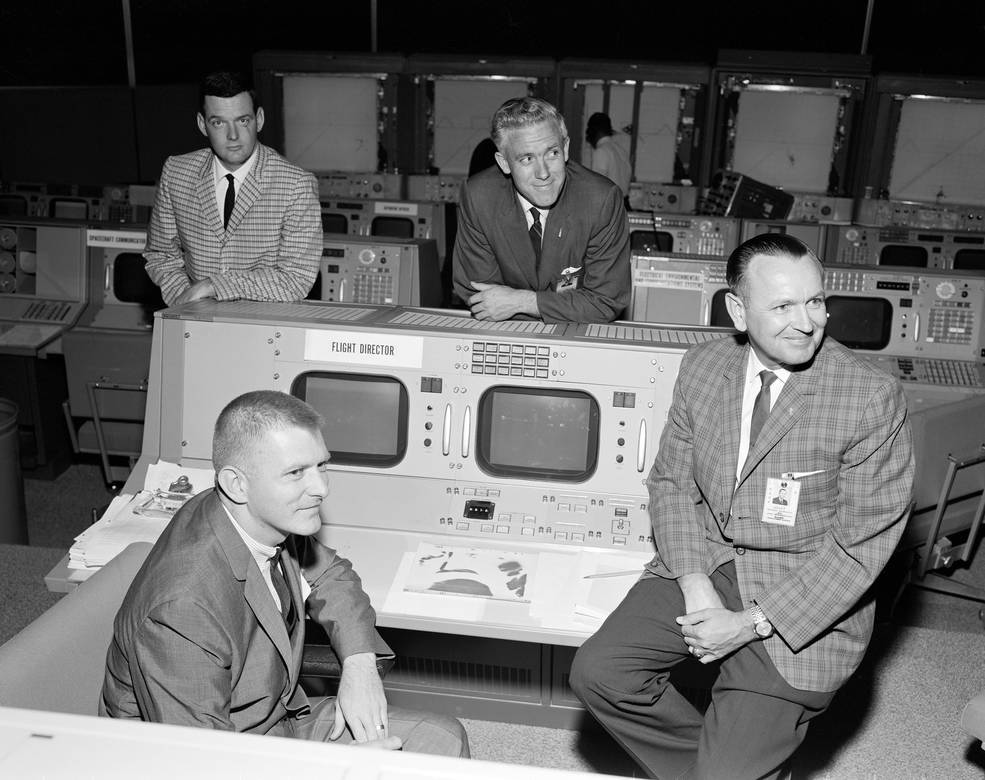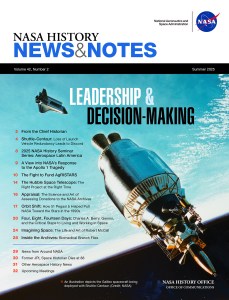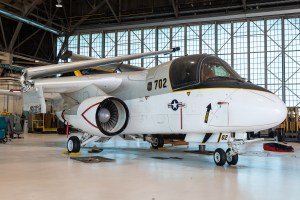On April 9, 1965, NASA Associate Administrator for Manned Space Flight George E. Mueller announced the change of primary flight control from human space missions from Cape Kennedy Air Force Station in Florida to the new Mission Control Center at the Manned Spacecraft Center (MSC) in Houston. Command from Houston began with the four-day Gemini 4 flight in June 1965, at the time the longest American space mission that also included the first U.S. spacewalk by astronaut Ed White. During the previous Gemini 3 flight in March, the Houston control center acted as backup to the Kennedy control center.
The Houston control center represented a giant leap forward for the nation’s space program. Significantly larger than the older control room at Kennedy, the new facility featured newer and faster computers, and spacecraft experts in adjacent support rooms assisted flight controllers during missions. The progressively longer missions necessitated that flight controllers operate in three rotating shifts to support the flights around the clock, a practice that continues to this day.
Mueller also announced that Christopher C. Kraft, Jr., would serve as mission director for Gemini 4, and as one of the three flight directors for the mission. John D. Hodge and Eugene F. Kranz would serve as the other two flight directors during the historic mission. Kraft first developed the role of flight director for the Mercury Program to supervise and direct all activities in Mission Control, with ultimate authority to ensure crew safety and mission success. Hodge became Kraft’s deputy and second flight director for the Mercury 9 mission in 1963, while Kranz served as assistant flight director for the last three Mercury missions. Also pictured in the attached photograph is flight director Glynn S. Lunney, who directed later Gemini missions. All four men went on to have illustrious careers as flight directors and managers for subsequent NASA human space flight programs. Kraft was center director of MSC, renamed the Lyndon B. Johnson Space Center during his tenure, from 1972 to 1982. The control center officially is now the Christopher C. Kraft Mission Control Center in his honor.
To read these flight directors’ oral histories with the JSC History Office, please visit:
https://www.jsc.nasa.gov/history/oral_histories/KraftCC/kraftcc.htm
https://www.jsc.nasa.gov/history/oral_histories/LunneyGS/lunneygs.htm
https://www.jsc.nasa.gov/history/oral_histories/KranzEF/kranzef.htm
https://www.jsc.nasa.gov/history/oral_histories/HodgeJD/hodgejd.htm






























